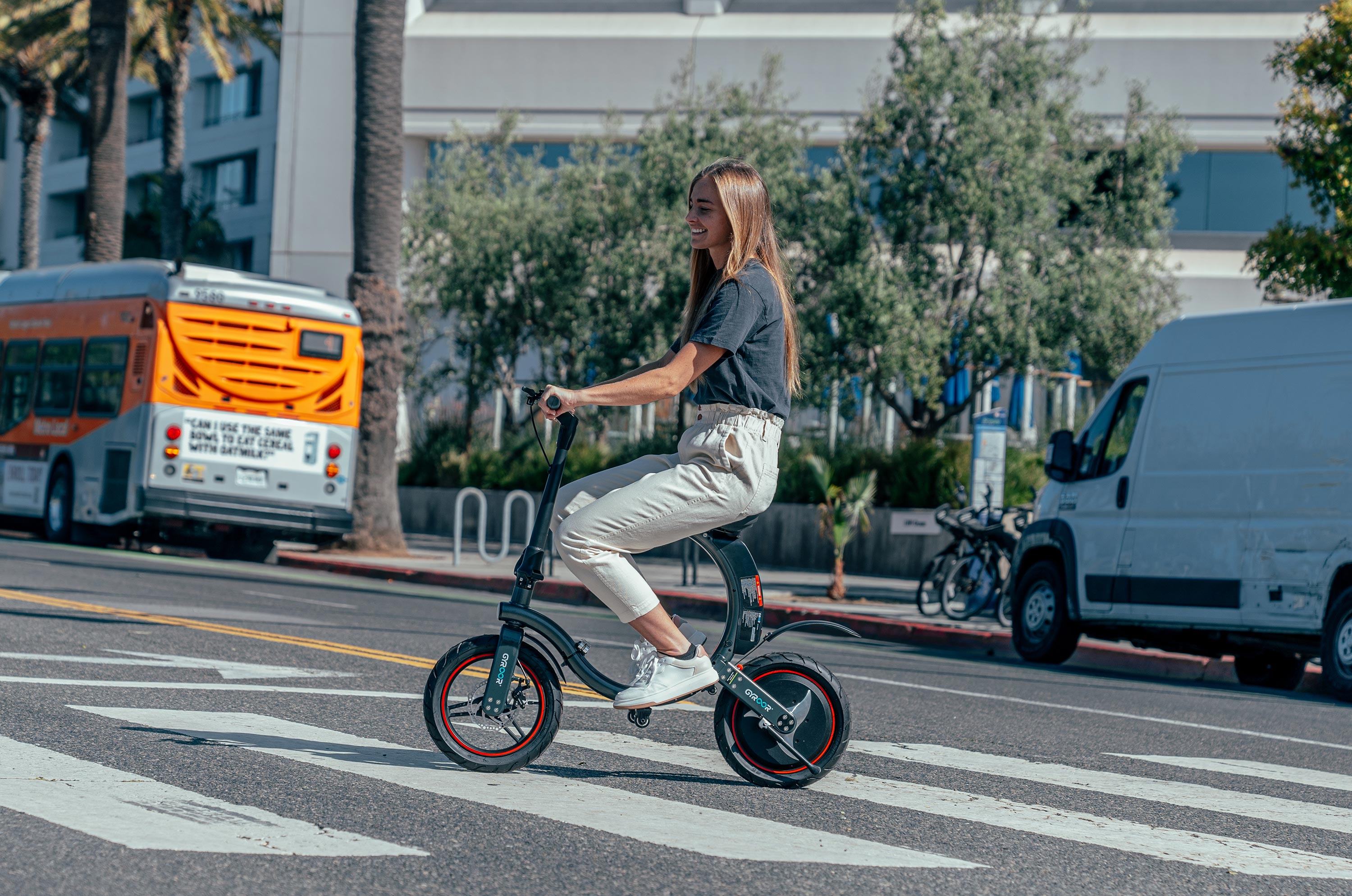You've been riding your bike for years, enjoying the freedom and exhilaration it brings. But now, you want to take your cycling adventures to the streets. Whether you live in a suburban area and want to ride to school or work, or you've recently moved to an urban setting and want to explore the city on two wheels, riding a bicycle on the street requires basic safety precautions and a good understanding of the rules of the road. In this comprehensive guide, we will provide you with essential tips and information to help you ride your bicycle confidently and safely on the streets.
Be Visible and Protected
One of the most important aspects of riding a bicycle on the street is ensuring your visibility to other road users. Here are some measures you can take to enhance your visibility and protect yourself:
-
Wear bright and reflective clothing: Choose vibrant colors that make you easily noticeable to drivers, especially during low-light conditions. Consider wearing reflective materials on your gloves, shoes, or jacket for enhanced visibility.
-
Use lights and reflectors: Install a white headlight on the front of your bicycle and a red taillight on the rear. These lights make you visible to others, especially during dusk, dawn, or nighttime riding. Additionally, affix reflectors to your bike, including those on the wheels and pedals, to increase your visibility from all angles.
-
Wear a helmet: Protecting your head is crucial in case of an accident or fall. Always wear a properly fitting helmet when riding on the street. Not only is it a wise safety precaution, but it is also mandatory in many jurisdictions.
Riding with Traffic
When riding on city streets, always remember to ride in the same direction as traffic flow.
Here's why:
Increased visibility: Riding with the flow of traffic allows drivers to anticipate your movements, making you more visible and reducing the chances of collisions.
Avoid surprises: Riding against traffic is not recommended as it increases the likelihood of accidents. Drivers may not expect cyclists approaching from the opposite direction, which can lead to dangerous situations.
Utilize bike lanes: Whenever possible, use designated bike lanes. These lanes provide a dedicated space for cyclists, separating them from vehicle traffic and enhancing safety.
Signal Your Intentions
Signaling your turns and movements is crucial to alerting other road users about your intentions. Follow these guidelines to communicate effectively:
Use hand signals: Before making a turn or changing lanes, use standardized hand signals to indicate your intentions to drivers and pedestrians. Extend your left arm straight out to indicate a left turn, or bend it upward at the elbow to signal a right turn.
Activate your lights: Whether it's day or night, make sure your bicycle lights are functioning correctly. Use your front and rear lights, as required by law, to provide additional visibility and signal your presence to others.
Communicate slowing down or stopping: When decelerating or coming to a stop, let others know by signaling your intentions. Use clear hand gestures to indicate your actions, especially when riding in traffic where vehicles may not expect sudden changes in your speed.
Make Eye Contact and Stay Alert
Maintaining awareness of your surroundings is vital for your safety on the road. Here are some essential tips to keep in mind:
Eye contact at intersections: When crossing intersections, make eye contact with drivers who are turning or stopping. By establishing visual contact, you ensure that they have seen you and are aware of your presence as a cyclist.
Focus straight ahead: Keep your eyes on the road ahead and maintain a steady gaze. Avoid looking down at your bike or up at the sky, as this can distract you from potential hazards on the road.
Minimize distractions: Using your phone while riding can significantly impair your ability to focus and react to sudden situations. Reserve phone usage for emergencies only, such as calling 911.
Follow the Rules of the Road
To ensure a safe and harmonious experience while riding on the street, it is crucial to follow the rules and regulations governing road traffic. Here are some fundamental principles:
Ride on the right side of the road: Always ride on the right side, with the flow of traffic. This allows for smoother interactions with vehicles and reduces the risk of accidents.
Obey traffic laws: Treat your bicycle as a vehicle and obey all traffic laws, including stopping at stop signs, red lights, and yield signs. Adhering to these regulations helps maintain order and prevents potential conflicts with other road users.
Maintain a straight line: Ride in a straight line whenever possible. Erratic movements can confuse drivers and increase the chances of collisions.
Conclusion
Riding a bicycle on the street can be an enjoyable and eco-friendly way to commute, exercise, or explore your surroundings. However, it is essential to prioritize safety and follow the guidelines outlined in this comprehensive guide. Remember to make yourself visible to others, ride with traffic, signal your intentions, stay alert, and adhere to traffic laws. By doing so, you can confidently navigate the streets and have a fulfilling and safe cycling experience. Happy riding!

Share:
Gyroor's Guide On How to Choose An Electric Scooter
Tips for E-Bike Commuting: Unlocking the Potential of Sustainable Transportation